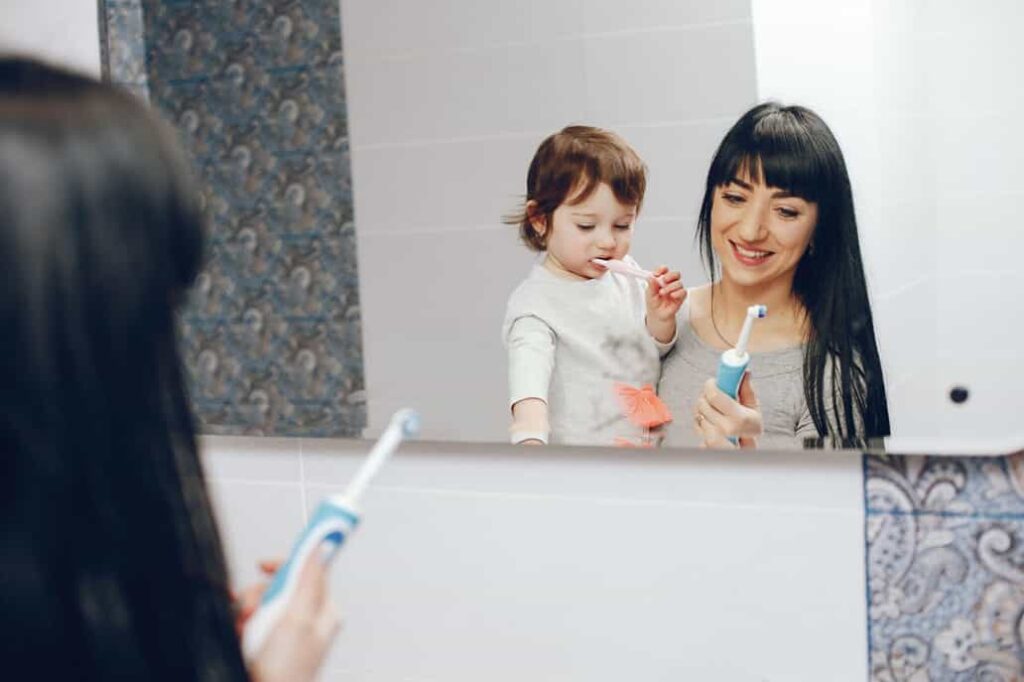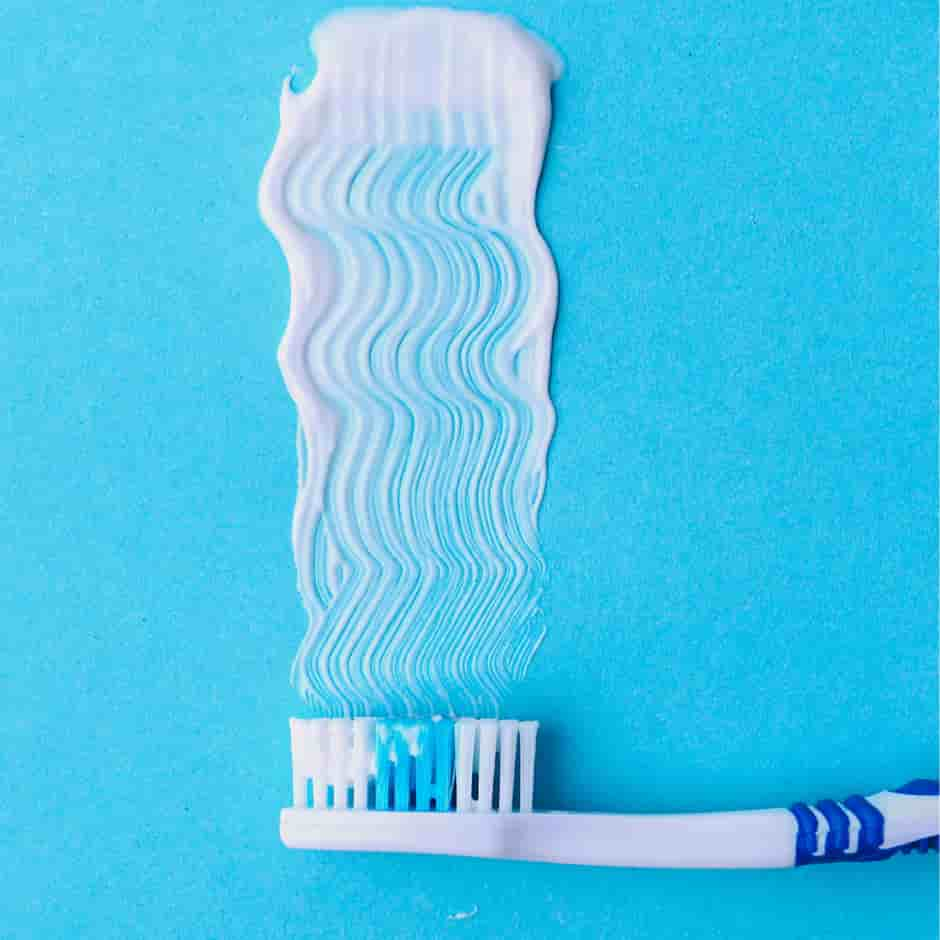Electric vs. Manual Toothbrushes is one of the most debatable questions when it comes to oral hygiene. Making the best choice for your smile can only start by at least properly brushing your teeth daily. Picking up a brush is no less than an actual struggle. One has to choose a brush that contains soft bristles so that it is not hard for the gums and enamel to handle. Now that a variety of brushes are available in the market, making an informed decision about choosing between electric vs. manual toothbrushes is essential.
When choosing a toothbrush, some important aspects cannot be disregarded. Firstly, as its primary role, a toothbrush has to be very efficient at removing plaque from teeth and the gums.
Secondly, it should be gentle and sensitive to the gums and enamel. Of course, no one wants a brush that is causing erosion of enamel and recession in the gums.
Thirdly, picking a brush with an appropriate head size and the ability to access difficult areas of the mouth is another crucial factor.
Lastly, individuals may have specific oral and dental conditions that require them to pay close attention to their specific needs. One can always go for tailored options so that oral hygiene can be maintained with specific requirements.
The purpose of writing this piece for comparing electric vs. manual toothbrushes is to provide a reader’s guide for an informed choice. Readers can use this blog to make an informed decision about electric models like the Philips Sonicare 4100 Electric Toothbrush and Oral-B Pro 1000. Similarly, by mentioning manual options like Colgate 360° and Oral-B Pro-Health, we have given a firm ground for them to see differences. The comparison explores the uniqueness, advantages, disadvantages, and social factors between Electric vs. Manual Toothbrushes.

Electric vs. Manual Toothbrushes: Overview
Manual toothbrushes are the most common, traditionally used tools for cleaning teeth using manual movements and pressure. Throughout scientific development, humans have been able to make toothbrushes in different sizes, shapes, and types of bristles to deal with the unique choices and needs of individuals. Hence, manual toothbrushes remain the most popular tools due to their usability, cost, and access throughout the world.
On the other hand, electric toothbrushes have completely changed the dynamics of dental hygiene in recent years. These devices have innovative features that are driven by electric power. By using mechanisms like rotating and oscillating with sonic brush heads; electric toothbrushes with automated brushing techniques have challenged the manual supremacy of traditional toothbrushes.
We have picked the top two models from each category to explain the comparison between electric vs. manual toothbrushes.
One of the top manual toothbrushes is considered to be Colgate 360°. Another top-notch model for manual toothbrushes is Oral-B Pro-Health.
Among all the electric toothbrush models available in the market, Philips Sonicare 4100 can be called the state-of-the-art sonic technology. Competing with Philips Sonicare 4100 in the electric toothbrush market is the Oral-B Pro 1000. The rotating and oscillating brush heads technology of this brush makes it well-known..

Electric vs. Manual Toothbrushes: Analysis
1. Cleaning Power and Effectiveness
Electric toothbrushes exemplified by models like Philips Sonicare 4100 and Oral-B Pro 1000 have proven to be highly remarkable in their ability to remove plaque and thorough cleaning. Since these devices utilize advanced sonic technology to clean, they have been seen to improve gum health in their users. Manual toothbrushes like Colgate 360° and Oral-B Pro-Health lack the automated features present in electric toothbrushes. But if used properly with gentle pressure in a circular motion they can still be highly effective in cleaning and ensuring good oral health.

The Philips Sonicare 4100 due to its sonic technology creates microbubbles to reach deep between the surface of teeth and gumline with rapid vibrations. It provides around 31,000 strokes of brush per minute, enabling it to thoroughly remove plaque with greater efficiency. This process results in the break up of plaque molecules, making it more effective in cleaning the surface of the teeth. The unique feature of pressure sensors that detect excessive pressure on the gums and enamel reduces the changes of erosion and recession. Similarly, due to its higher frequency, the brushing strokes ensure thorough cleaning of the teeth. Even the hard-to-reach areas are targeted and effectively cleaned through this process.
The Oral-B Pro 1000 uses rotating and oscillating brush head technology. These movements make it easy and effective to break up and eliminate plaque buildup. Moreover, it can easily be used with a variety of head brushes making it a good option for people with unique dental and oral conditions.
The popularity of Colgate 360° is due to the combination of soft bristles in the front and a tongue and cheek cleaner on the back of the brush. The compact size of Colgate 360° makes it a good option for both traveling and daily use.
Oral-B Pro-Health toothbrush has unique crisscross bristles in the front with a tongue and cheek cleaner at the back. Being durable in construction and comfortable in grip, Oral-B Pro-Health has emerged as a widely used and trusted brand recently.
| Category | Our Choice |
| Cleaning Power and Effectiveness | Electric Toothbrushes |
| Explanation | Electric toothbrushes have deeper penetration and cleaning ability and overall effectiveness. Manual toothbrushes need vigilant control over their effectiveness and cleaning ability, making them prone to deficiencies. |
3. Convenience and Ease of Use
The Philips Sonicare 4100 comes with a built-in feature of a timer in it. This feature allows the users to execute the two-minute duration of the recommended brushing time. Similarly, it offers two brushing intensity modes including cleaning and sensitive mode. This allows users to adjust Sonicare 4100 according to their individual needs and preferences. Moreover, the light constantly shows the battery status of the device along with a reminder to ensure you replace your brush head regularly. Moreover, having a long battery life, you only need to charge the device once every two weeks.
The Oral-B Pro 1000 also comes with an inbuilt feature of a timer in it. But a plus point for this electric brush is that it signals every 30 seconds so that the user switches to a different quadrant of the mouth. With its three cleaning modes, Oral-B Pro 1000 can prevent overbrushing and ensure a systematic and even brushing routine for the users.
Oral-B Pro 1000 ensures the protection of gums with its sensitive cleaning and gum pressure control that stops brushing automatically if brush pulsation is too hard on the gums. It comes with a rechargeable battery with indicators that show when you need to charge your device. Moreover, it can be used with any Oral-B brush heads for your individual needs including deep cleaning, gentle cleaning, and whitening.

On the other hand, manual toothbrushes are small and compact in sizes that makes them travel-friendly and easy to pack. The Colgate 360° toothbrush has a slim and ergonomic design that is easy to hold and occupies minimal space in toiletry bags for traveling. Similarly, Oral-B Pro-Health gives a comfortable grip and maneuverability during brushing sessions. Interestingly, manual toothbrushes do not have problems like batteries and charging. This makes them a hassle-free option for outdoor activities and a carefree tool for cleaning. They also lack complex features, modes, and settings, making them easy to use by people of all ages, education, and dexterity.
| Category | Our Choice |
| Convenience and Ease of Use | Manual Toothbrushes |
| Explanation | Manual toothbrushes are better for many people in terms of convenience and ease of use due to their portability, simplicity of operation, and accessibility. However, some may prefer electric brushes due to advanced features such as built-in timers, multiple brushing modes, and pressure sensors. |
3. Cost Analysis and Long-term Investment
When it comes to Electric vs. Manual Toothbrushes, Simply comparing the costs of electric toothbrushes like Philips Sonicare 4100 and Oral-B Pro 1000 with manual toothbrushes like Colgate 360° and Oral-B Pro-Health shows the former to be costly. The Philips Sonicare 4100 and Oral-B Pro 1000 range between the cost of around $40 to $80, depending upon models and their features. On the other hand, Colgate 360° and Oral-B Pro-Health range between $2 to $5, even with the best quality. This makes manual toothbrushes to be more budget-friendly and easy on the pocket while purchasing.

However, when thought in a long-term perspective, electric toothbrushes can offer more value, durability, and low maintenance costs. Manual toothbrushes are cheap and readily available across the globe but need constant replacement every three to four months. Sometimes, bristles may get damaged quite early and can need immediate replacement. In contrast, electric toothbrushes only need replacement of brush heads every three to six months on average. Sometimes, electric toothbrushes require battery replacement too, but these are rare occurrences and need overall low maintenance as compared to constant spending on manual toothbrushes.
| Category | Our Choice |
| Cost Analysis and Long-term Investment | Manual Toothbrushes |
| Explanation | When compared to investment in electric toothbrushes, the cost of manual toothbrushes is minimal. This is a good option for people who cannot invest in electric toothbrushes. Moreover, one can always try a variety of options for manual brushes due to low cost, but in the case of electric toothbrushes, a decision made can be heavy on the pocket. However, people who do not want to spend their precious time replacing brushes should go for electric brushes. |
4. Environmental Impact and Sustainability
Electric toothbrushes have an environmental impact because of the use of rechargeable batteries and electronic parts. The discarding of these batteries and components can cause serious problems if the hazardous material used in their making can leach into the soil and water bodies. Similarly, this electronic material also results in electronic waste. This can accumulate landfills pose risks to human health and worsen the impacts of climate change. The manufacturing of these electronic components involves extraction of raw materials, energy consumption, and emission of greenhouse gases. This is definitely making the environment damaged, and fumes of resulting gases may result in the increasing temperature of the Earth.

Manual toothbrushes have little environmental cost in their construction and overall usage as compared to electric brushes. However, the use of plastic and its disposal has been a huge concern for people in favor of manual brushes. Gladly, there are now environmental friendly options available that are made of natural and biodegradable materials like Bamboo sticks. Similarly, instead of traditional plastic sources, alternatives like recycled plastic can be used in its making.
This alternative is comparatively cleaner and reduces the overall carbon and environmental footprint of people using manual toothbrushes. However, this can only happen if people are careful enough to dispose off the brushes properly so that it does not get dumped into water bodies and heaps of garbage.
| Category | Our Choice |
| Environmental Impact and Sustainability | Manual Toothbrushes |
| Explanation | Manual toothbrushes are better for environmental impact and sustainability as they do not rely on batteries or electronic components, reducing electronic waste, and can often be made from biodegradable materials such as bamboo, offering eco-friendly alternatives. |
Conclusion
Cleaning Power and Effectiveness: Electric toothbrushes like Philips Sonicare 4100 and Oral-B Pro 1000 offer deeper cleaning due to advanced technology, whereas manual toothbrushes like Colgate 360° and Oral-B Pro-Health require more vigilance but can still be effective if used correctly.
Convenience and Ease of Use: Electric toothbrushes offer features like timers and multiple brushing modes, making them convenient for some users. However, manual toothbrushes are simpler, portable, and do not require charging, making them more accessible for many people.
Cost Analysis and Long-term Investment: While manual toothbrushes are cheaper upfront, electric toothbrushes may offer more value in the long run due to durability and lower maintenance costs associated with brush head replacements rather than entire brush replacements. Moreover, with manual toothbrushes, the low cost allows for more chances of trial and error in finding the right brush for individual preferences and needs.
Environmental Impact and Sustainability: Manual toothbrushes have a lower environmental impact as they do not rely on batteries or electronic components. Additionally, eco-friendly options made from biodegradable materials like bamboo are available.
Please look at this too.

